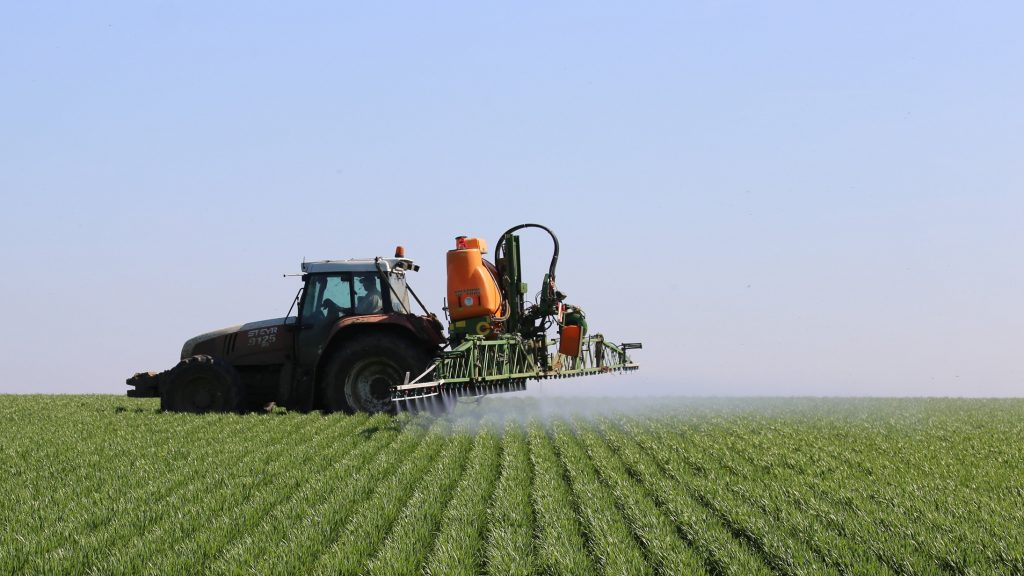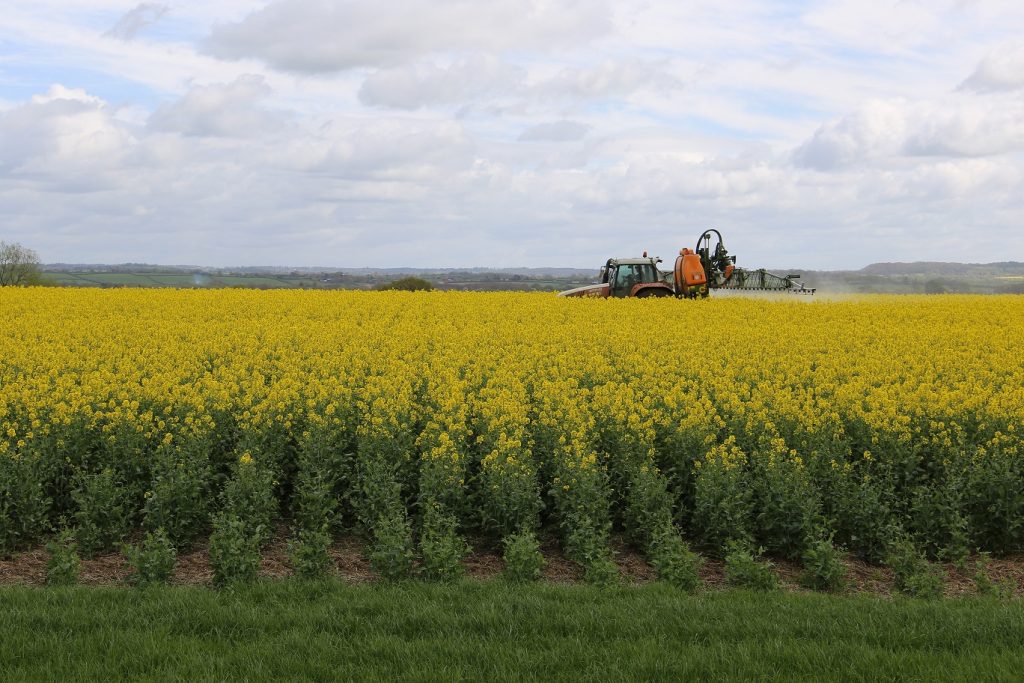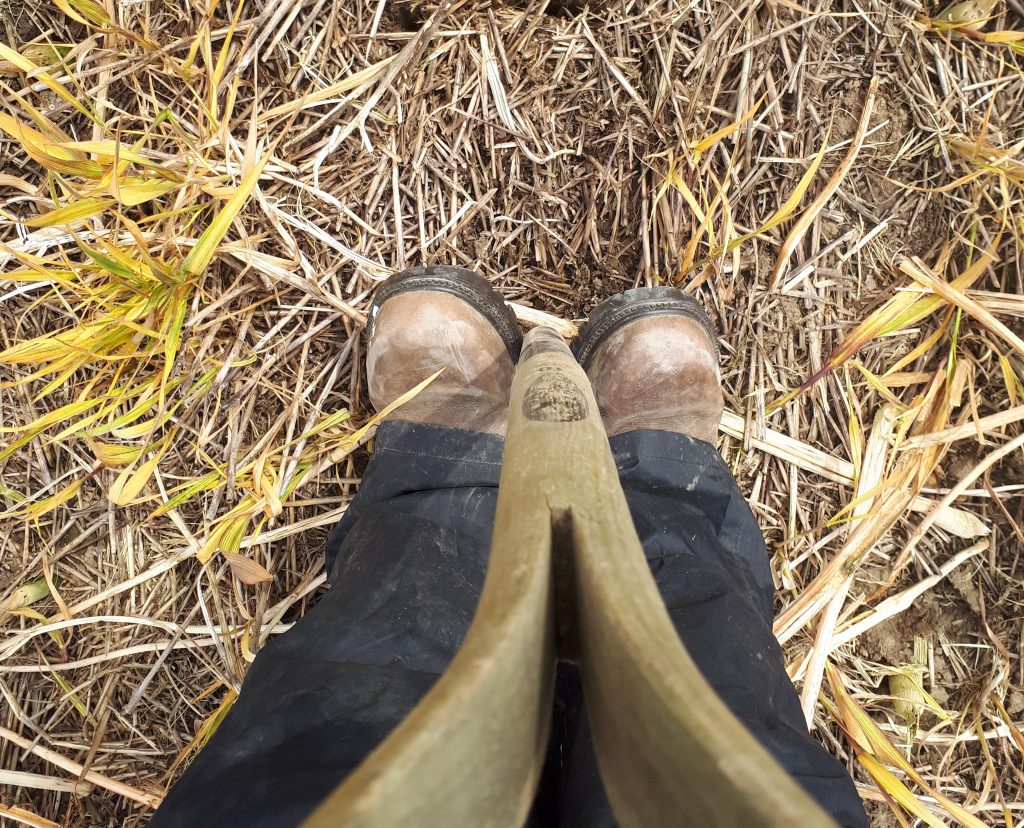Starting the month on a wet note, we fell behind with our spray schedule as did many others I imagine in this difficult season.
Winter Wheat
At the start of the month I applied 180kg/ha of 33.5% N to two fields of Wheat with further applications of Sulphur N and 0.24.24 later in the month.
The break in the wet weather in mid-April was well overdue and allowed us to get on with the spraying. Nearly a month late we applied the first application to the Wheat which was a Hatra mix on the 18th of April.
The difficult weather conditions has put pressure on our timings however the crops are looking clean and will hopefully not be affected too much by the unusual season.

Winter Wheat receiving its first chemical application of the year
Oilseed Rape
The Rape received 300kg/ha of N 33.5% at the start of the month which was a welcome boost to the crop.
Like the Wheat the Prosaro application was influenced by the wet weather and went on at 0.75l/ha on the 25th of April.
Again we have been exceptionally impressed with the wider row 66cm spaced OSR and will continue to favour this over narrower rows for its ability to promote branching lower down the crop, stronger straw and increased light throughout the canopy.

Prosaro Fungicide being applied to the Rape drilled on 66cm row spacing
Cover Crops and Counting Worms
With warmer soils just around the corner I put the final nail in the cover crops coffin with an application of Glyphosate at 3l/ha. The frost had done a brilliant job of battering the crop to almost nothing and the pre-drilling application will clean the seedbed up nicely and keep out any weeds that have emerged.
We took part in a Worm Count as part of a wider research project and conducted the count in one of the cover crop fields that was going on to be the new companion crop trial field. 10 holes later and enough soil sifted through to make a small statue we were left with our results. These were submitted to Jackie Stroud who then went on to collate the data from 100 farms.
Our results came back as having a good presence of earthworms across the field particularly of the Epigeic and Endogeic varieties. We’ve typically found high levels of earthworms across the farm and this we attribute to increasing the soil organic matter through retaining straw on the surface providing the perfect food supply.
Worms really are our most important workers and help aerate and drain our soils with their channels throughout the soil profile.

Digging for gold - We enjoyed taking part in the 60 minute worm campaign